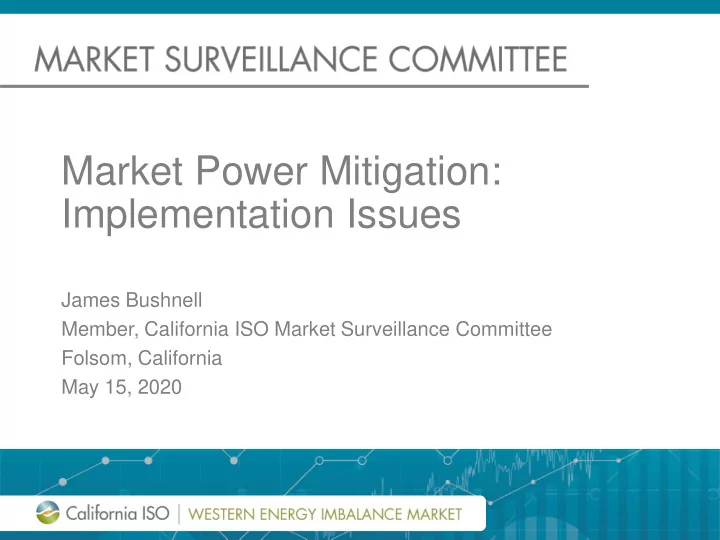

Market Power Mitigation: Implementation Issues James Bushnell Member, California ISO Market Surveillance Committee Folsom, California May 15, 2020
Emerging Challenges in Market Power Mitigation • Expansion of EIM means many vertically integrated utilities are the largest suppliers • Changes to retail structure in California means regulated utilities are often large net suppliers • Emerging role for non-generation resources greatly complicates derivation of default bids • Less robust gas markets in some EIM areas also complicates DEB derivations
Issue 1: when to mitigate? • The blunt measure of net seller/ net buyer over- simplifies the likely incentive effects • Need for a more nuanced, continuous measure of net-supply • How do day-ahead and RTM markets differ in this regard? • What are possible ”feed - back” effects of using DAM positions for net supply in real time? • What if real-time markets feature pivotal suppliers only because competitive generation went un- dispatched in earlier markets?
Issue 2: Who to Mitigate? • LMPM mitigates all suppliers providing counter- flow to uncompetitive constraints • Even very small suppliers • Reasons why • Computationally difficult to identify full set of “potentially” pivotal suppliers? • Time to examine how serious this issue is • The 3 pivotal supplier test is only a rough approximation of true market power • This cuts both ways, already a conservative standard
Summary • The goal behind all market power mitigation is to mitigate seriously harmful market power while also avoiding potentially inefficient proscriptive dispatch • Emerging trends in the western market make this an important time to re-examine some of the assumptions behind implementation of mitigation at both the system and local level.
Thank you James Bushnell UC Davis
Recommend
More recommend